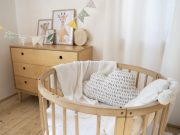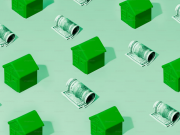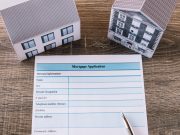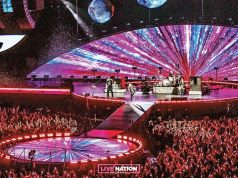When it comes to acquiring a home in the Philippines, one of the most significant decisions you will face is whether to buy an existing house or build your own. This crucial choice largely depends on various factors ranging from your budget and lifestyle preferences to long-term investment plans.
In this guide, we will look into the detailed comparison of buying versus building a home in the Philippines, providing you with invaluable insights to help you make an informed decision. Keep in mind that your chosen path could have far-reaching implications, affecting not just your finances but also your comfort, convenience, and overall quality of life.
Keep an eye out as we delve into the pros and cons of each option, equipping you with the knowledge to navigate the complexities of the real estate and construction industries in the Philippines. By understanding these aspects, you can ultimately choose the best route that aligns with your needs, wants, and future goals.
I. The Buying Process: A Detailed Look
In the Philippines, buying a pre-existing house is a standard route for many aspiring homeowners. Here is a detailed look at this process:
1. Understanding the Real Estate Market
The Philippine real estate market is diverse and dynamic, with options ranging from condos in bustling cities to standalone homes in serene provinces. Understanding the market involves researching property values, neighborhood profiles, and future development plans.
2. Steps Involved in Buying a House
1. Define your budget and needs.
2. Search for available properties.
3. Engage a real estate agent.
4. Inspect the property.
5. Negotiate and make an offer.
6. Secure financing.
7. Close the deal.
3. Pros of Buying a House
- Convenience and Speed
Ready-made houses are move-in ready, saving you time.
- Predictable Costs
Expenses are generally known upfront.
- Established Neighborhoods
You can choose a home in a well-developed community.
4. Cons of Buying a House
- Limited Customization
Pre-existing homes may not meet all your personal preferences.
- Hidden Costs
Maintenance and renovation costs can add up.
- Older Homes may Require Renovation
Aging properties can necessitate costly repairs.
The buying process requires careful planning and consideration. Being aware of these pros and cons can help you make a more informed decision about whether buying a house in the Philippines is right for you.
II. The Building Process: What to Expect
Building a House in the Philippines offers a unique set of opportunities and challenges. Here is an overview of what to expect:
1. Understanding the Construction Industry
The construction industry in the Philippines is robust and continually evolving. It is essential to familiarize yourself with factors like material costs, labor rates, and building regulations.
2. Steps Involved in Building a House
1. Secure a lot.
2. Plan your home design with an architect.
3. Obtain necessary permits.
4. Hire a reliable contractor.
5. Monitor construction progress regularly.
6. Complete final inspections and move in.
3. Pros of Building a House
- Customization Options
You have complete control over the design and layout of your home.
- Modern Design and Efficiency
New homes can be built with the latest design trends and energy-saving technologies.
- Potential for Higher Resale Value
Unique, well-built homes can command higher prices in the future.
4. Cons of Building a House
- Time-Consuming
Construction can take several months to over a year.
- Unexpected Costs
Delays, changes in design, or unforeseen issues can inflate costs.
- Lot Availability and Location Challenges
Finding the right lot in your desired location can be difficult and expensive.
While building a home allows for personalization and potential long-term benefits, it also comes with its own set of complexities. Understanding these will help determine if. This route aligns with your lifestyle, budget, and patience.
III. Financial Considerations: Build vs. Buy
Deciding whether to build or buy a house in the Philippines requires careful financial consideration. Here is an overview of the critical factors:
A. Cost Comparison: Upfront and Long-term Costs
| Cost Factor | Building a House | Buying a House |
| Upfront Costs | Building a house generally requires a more considerable upfront investment. This includes land costs, architect fees, construction costs, and more. | Buying an existing house often involves lower initial costs. The significant expenses include the home price, inspection fees, and closing costs. |
| Long-term Costs | New homes are built with modern materials and systems, potentially reducing maintenance and utility costs in the long run. However, landscaping and exterior work might add to your expenses. | While the upfront costs could be lower, an existing home may have higher long-term costs due to maintenance and potential renovations. Plus, older homes can be less energy-efficient, leading to higher utility costs. |
The choice between Building and buying a house will largely depend on your financial situation, time frame, and personal preferences. It is essential to consider both the upfront and long-term costs when making your decision.
B. Financing Options: Mortgages vs. Construction Loans
| Financing Option | Mortgages | Construction Loans |
| Purpose | Mortgages are used to finance the purchase of an already-constructed home. | Construction loans are intended to cover the costs of building a new home. |
| Interest Rates | Interest rates for mortgages tend to be fixed, although variable rate options are also available. | Interest rates for construction loans are often variable and may be higher than mortgage rates. |
| Loan Term | Mortgages typically have longer terms, often up to 30 years. | Construction loans usually have shorter terms, typically one year or until the construction is complete. |
| Payment Structure | For mortgages, you start paying principal and interest immediately with monthly payments. | With construction loans, you often pay only interest during the construction phase. Once the house is built, the loan can be converted into a traditional mortgage. |
Both financing options have their pros and cons, so it is essential to consider your financial situation, risk tolerance, and long-term plans before making a decision. Always consult with a financial advisor or lending expert to understand the best choice for your specific circumstances.
C. Tax Implications: New Build vs. Existing Home
| Factor | New Build Homes | Existing Homes |
| Transfer Tax | Transfer tax is not applicable for newly built homes as you are the first owner. | For existing homes, a transfer tax of 0.5% to 0.75% of the selling price or zonal value (whichever is higher) applies. |
| Documentary Stamp Tax (DST) | DST is 1.5% of the selling price or zonal value (whichever is higher). This tax is applicable whether the property is newly built or an existing home. | The same as with newly built homes, DST is 1.5% of the selling price or zonal value (whichever is higher). |
| Value Added Tax (VAT) | VAT of 12% applies if the total consideration (or selling price) exceeds PHP 3.2 million. | The same VAT rules apply to newly built homes. |
| Real Estate Tax (RET) | RET is based on the assessed value of the property (land and Building), which is determined by the local government unit. Since the house is new, the estimated value might be higher. | RET is also based on the estimated value of the property. However, since the home is older, the assessed value might be lower compared to a new build. |
Please note that these are general guidelines, and actual tax implications may vary depending on specific circumstances. Always consult with a tax professional or real estate expert, like HousingInteractive, to understand the full tax implications of building a new home versus buying an existing one.
IV. Environmental Impact: Which is Greener?
Building a new house and buying an existing one both have environmental impacts. Here is a comparison:
Environmental Footprint of Building a New House
1. Manufacturing Impact
The manufacturing process that produces the materials needed for construction can have a significant effect on the environment, involving considerable energy use and carbon emissions.
2. Carbon Emissions
Building a typical two-bedroom house can produce around 80 tons of carbon dioxide.
3. Resource Consumption
New homes use a lot of resources not only during construction but also throughout their lifespan.
4. Building Materials
Many common building materials, from lumber to naturally sourced stones and minerals, can cause significant harm to the environment.
Sustainability of Buying an Existing House
1. Reduced Environmental Impact
Renovating an existing property is generally more sustainable than new construction, depending on factors like material selection and the project’s scope.
2. Reduced Resource Use
An existing home has already used its primary construction resources, leading to a lower environmental impact compared to a new build.
3. Preservation of Land
Buying an existing home helps preserve natural land that would otherwise be used for new construction.
It is important to note that green building techniques and eco-friendly housing options can significantly reduce the environmental impact of both new builds and renovations.
V. Emotional Factors: The Stress and Satisfaction Factor
Decisions when deciding between Building or buying a house are not just about cost and time—they are also about the feelings and experiences associated with each option, from the excitement of designing your dream home to the anxiety of potential construction delays or the satisfaction of securing an existing home to the stress of competitive bidding.
| Buying a House | Building a House | |
| Excitement | Buying a house can be exciting as it is often quicker to move into, and you can see exactly what you are getting before you commit. | Building a house can also be exciting as you get to design your own space and see your vision come to life. |
| Stress | The process of buying a house can be stressful due to bidding wars, dealing with real estate agents, and securing a mortgage. | Building a house involves different types of stress, like finding the right contractor and dealing with construction delays and cost overruns. |
| Satisfaction | There is a sense of satisfaction in buying a house as it is a significant accomplishment and a milestone in life. | There is a deep sense of satisfaction in building a house as it is a truly personalized space tailored to your preferences. |
| Anxiety | It can arise from potential hidden issues with an existing house, such as plumbing or electrical problems. | Anxiety might stem from the fear of making wrong decisions during the design and construction process. |
| Frustration | When dealing with the competitive housing market or when the house does not meet all your needs. | Frustration might arise if there are delays in construction or if the final result needs to meet expectations. |
| Accomplishment | Buying a home often feels like a significant accomplishment, especially for first-time homebuyers. | Building a home from scratch can feel like a massive accomplishment, given the effort and time invested. |
Making Your Decision
When it comes to deciding between building a new house or buying an existing one, the choice is highly personal and depends on a myriad of factors. These include your budget, timeline, personal preferences, and even emotional readiness for the challenges each option presents.
Key Factors to Consider
| Factors | Buying a House | Building a House |
| Cost | Buying an existing home often costs less upfront. | Building a new home usually costs more upfront but may save money in the long run. |
| Time | Buying is usually faster and ideal for those in a hurry to move. | Building a house from scratch usually takes longer. |
| Personalization | Existing houses may not meet all your specifications. | Your specifications. Building a house allows for customization according to your exact preferences. |
| Emotional Factors | Buying has its own sets of emotional highs and lows, including stress from the competitive housing market. | The Building also has its emotional aspects, such as the excitement of designing your own space and the stress from potential construction delays. |
Final Thoughts and Recommendations
There is no definitive answer as to whether Building or buying is the better option. It all boils down to what matters most to you. If you value customization and are willing to invest the time and endure the potential stress of construction, then building a new home might be for you. On the other hand, if you prefer a quicker process and the charm of an existing neighborhood, then buying a current house could be the way to go.
In the end, making a well-informed decision requires careful consideration of all the factors involved. Weigh the pros and cons, consider your lifestyle needs and financial situation, and consult with professionals before making your final decision.

























